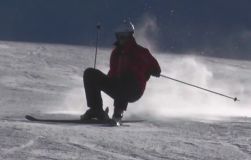Increased knee injuries related to higher binding settings?
Started by Kowal.Ski in Ski Hardware 23-Feb-2017 - 30 Replies
Ranchero_1979
reply to 'Increased knee injuries related to higher binding settings?' posted Mar-2017
Good to have a resident brain to get beyond our personal bias
Brucie
reply to 'Increased knee injuries related to higher binding settings?' posted Mar-2017
SwingBeep
reply to 'Increased knee injuries related to higher binding settings?' posted Mar-2017
Ranchero_1979
reply to 'Increased knee injuries related to higher binding settings?' posted Mar-2017
Brucie
reply to 'Increased knee injuries related to higher binding settings?' posted Mar-2017
SwingBeep
reply to 'Increased knee injuries related to higher binding settings?' posted Mar-2017
I also think technique also plays a role, I don't think skiing with your feet wide apart and upweighting to initiate turns is a good idea. This bloke had a very near do.

The bindings didn't show any signs of releasing as he fell backwards, and only released some time after he hit the deck.
Ranchero_1979
reply to 'Increased knee injuries related to higher binding settings?' posted Mar-2017
Andymol2
reply to 'Increased knee injuries related to higher binding settings?' posted Mar-2017
Anatomically women are at greater risk of ACL injuries.
Why are they reported more? Not sure that compensation is likely to be the biggest factor in this as falling over and injuring yourself is considered an inherent risk in the sport and difficult to prove negligence.
What has changed is that ACL repairs are becoming more commonplace.
In the past the techniques were not that successful but these days the techniques have been refined and are done more frequently by more orthopaedic surgeons, with greater success rates. Again MRI scans becoming more commonplace has made it easier to diagnose an ACL rupture easily, so if you rupture your ACL you are more likely to be investigated and a definitive diagnosis made because there is the option of repair.
Ultimately this means more ACL injuries are documented because there are options that mean the injured skier will be referred by their physio or GP for investigation and thus documented ACL injury rather than documented painful knee or unstable knee.
Are more people skiing these days? Are they skiing faster? Or are the skis or bindings the fault? Or is it just the way statistics get recorded?
Topic last updated on 16-March-2017 at 17:37
